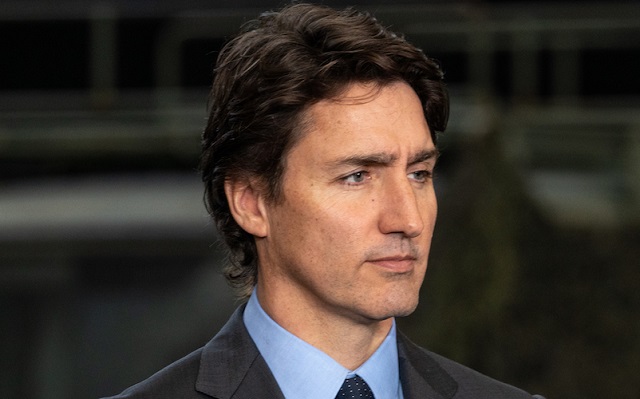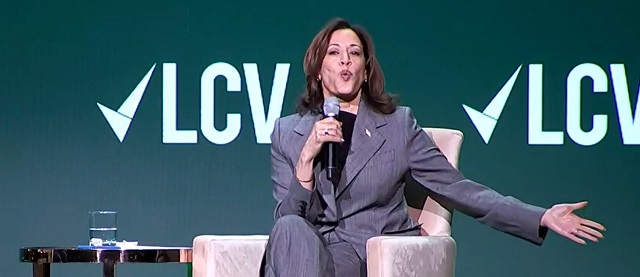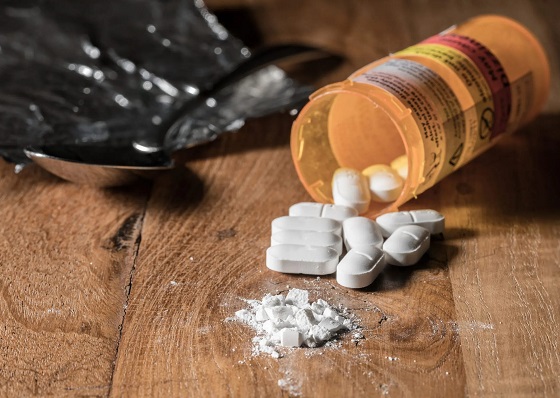Brownstone Institute
Kid Lab Rats

From the Brownstone Institute
BY
” (since [Covid] is universally mild in children), the risk-to-benefit ratio for the [Covid] mRNA injections in children is infinitely bad,” Baker said. “There is no ethical reason whatsoever to continue clinical trials of these products in children, and all such trials should be stopped.” “
Mommy, can I be a Covid lab rat?”
That is a request most parents will never hear and it is a request that very few parents would ever want to hear.
But, unlike the more typical “Can I have a pony?” request, letting your child be a Covid shot test subject is a request that can actually be granted around the nation.
Right now, for example, Pfizer/BioNTech is running an ongoing clinical trial to test the effectiveness of its shots (the shot is not a vaccine as it does not prevent catching the virus or transmitting the virus as typical vaccines do) on kids.
Pfizer has been running radio and other ads looking for test subjects; this is how they describe the study on their “Enrolling Children 6 to 23 months old for a COVID-19 Vaccine Study” website:
This study will help us learn how well our updated COVID-19 vaccine works in babies and toddlers who have not been previously vaccinated and see if the number of recommended doses can potentially be reduced for children under the age of 5. The study vaccine has been authorized by the United States Food and Drug Administration for children at least 6 months of age. It is designed to protect against the newer COVID-19 variant called XBB.1.5.
The company is also running similar trials for older kids and, of course, adults.
Clinical trials for drugs and procedures involving children are not inherently wrong and they are conducted safely around the world almost daily.
But this Covid trial stands out for a number of reasons.
First, the trial only involves kids who have never had a Covid shot before. The likelihood that a parent who has declined to get the shot for their kids in the first place will say “We chose not to get the shots for our kids, but feel free to experiment on them with the stuff we previously declined” is minimal.
In other words, if a parent didn’t feed their kid aluminum foil-flavored ice cream before it is highly unlikely they would feed their kid an experimental version of aluminum foil-flavored ice cream, even if you paid them (the trial comes with certain compensation enticements – Pfizer did not respond to a request for exactly what they are in this trial, though industry averages would indicate the pay would be between a few hundred to a few thousand dollars).
Second, there is the matter of “informed consent.” A trial subject must give permission freely, be told of any risks, and understand the entire situation. Clearly, nine-month-olds cannot do that.
It is perfectly legal for parents to give their “informed consent,” but here we get into the third problem: the risk/benefit question.
For example, during the pandemic (early 2020 to May 2023) there were 41 Covid deaths in California of kids under five. That number does not differentiate between “died with Covid” or “died from Covid;” that is a debate that continues to rage across the country and shall be put aside for the time being.
Every death of a child is a tragedy and this article is not intended to lessen that fact. However, children in general were not at all likely to get, let alone die from, Covid during the pandemic.
During the pandemic, there were about (rolling average) 2.4 million (about 6% of the total population) under-fives in California and there were about 385,000 cases of Covid reported in that age group.
Currently, about 3.2% of California’s under-fives have had the latest shot. That’s on par with the national average. What is interesting is that of the 70,817 kids who have received the shot in the state, 41,224 live in the Bay Area. In other words, the Bay Area has 20% of the state’s population, but 57% of the state’s “vaccinated” toddlers and babies. But do not ever think that politics has had nothing to do with Covid protocols.
During the pandemic, the overall likelihood of a child dying from/with Covid was about 1 in 60,000; for those over 75 – about 6.5% of the population or 2.7 million – there were about 51,000 with/from Covid deaths, or about 1 in 50.
The risk, clearly, is extremely different depending upon age and general state of health.
With a relative risk of being harmed by Covid, the risks of the Covid shot itself must be considered carefully – note: no kid in the study will get a placebo for comparison purposes.
The Covid shots, in the general population, did have significant side-effects and did cause a number of deaths. While these numbers are not broken out by age, in the same time period there were 640 deaths and 89,000 “adverse effects” experienced (much much more than just a sore arm) by Californians.
Also during the same time period, all other vaccines combined caused 66 people to die and 14,000 to have a reportable “adverse effect.” (Note – the numbers are taken from the CDC’s “vaccine adverse event reporting system,” a tool it stood by as an early warning device for decades…that is, until the Covid problem numbers got too high.)
That puts the general odds of something bad happening to a person after they get a Covid shot at about 1 in a 1,000 and some studies have shown it to be 1 in 800. In other words, the risk from the shot appears to outweigh the risk of Covid itself by a factor of 60 times.
Citing the uncertainty of benefit, it should also be noted that the European Union has not cleared the shot at all (with minor exceptions) for the under-fives and were hesitant in allowing them for the under 18s.
Clearly, the risk outweighs the reward, as it were, and it is unclear – because Pfizer did not answer any request for information/comment (see questions below) – if parents are given those figures when making the decision to enroll their kid in an experimental drug program.
Adults calculate risk and reward constantly – from “Can I make that light before it turns red?” to “Should I tease that lion?” But a seven-month old is simply not capable of doing so and while certain clinical trials do hold out serious hope and are important for society at large, a trial such as this for such a limited reward – kids very very very rarely get, let alone suffer seriously, from Covid – seems dubious.
In other words, if you wanted to test a new malaria drug you would not do so on Santa’s elves at the North Pole because there are no mosquitoes there to infect anyone.
According to the Belmont Report, which set baseline standards for human-involved clinical trials in the late 1970s (it was a government reaction to the horror of the CDC’s own “Tuskegee Syphilis Study”) one of the three core standards for justifying clinical trial testing is “beneficence.”
In other words, there is an obligation to protect persons from harm by maximizing anticipated benefits and minimizing possible risk and harm.
That risk/benefit calculation obviously changes in regard to other far more common childhood maladies, making participation in those studies potentially far more “beneficent.”
But in the case of Covid, the question is how are maximal, as it were, are the anticipated benefits?
Very very minimal and that is the problem, said Dr. Clayton Baker, former Clinical Associate Professor of Medical Humanities and Bioethics at the University of Rochester.
“Given the real and well-established risks of harm (including myocarditis and death), and given the functionally zero potential for benefit (since [Covid] is universally mild in children), the risk-to-benefit ratio for the [Covid] mRNA injections in children is infinitely bad,” Baker said. “There is no ethical reason whatsoever to continue clinical trials of these products in children, and all such trials should be stopped.”
Come to think of it, maybe just get the kid the pony instead.
Here’s a link to an on-going kids Covid study with a handy map so you can find a location near you (mostly Bay Area): A Study to Learn About Variant-Adapted COVID-19 RNA Vaccine Candidate(s) in Healthy Children
For clinical trials in general, you can look here for one that you might be interested in taking part in:
For clinical trials just about Covid, you can look here:
As noted above, here are the questions Pfizer did not reply to:
-Exactly how is informed consent handled? I assume a parent/guardian can provide said consent?
-Do (or have) you run trials with previously vaccinated children?
-What child/youth trials have been run in the past and what have been their results?
-What is the compensation amount?
-Have any previous trials shown conclusively that the vaccine ameliorates Covid severity in children?
-When and in what manner did the FDA approve this trial?
-When do you expect to conclude the trial?
-Is this trial aimed at testing a “booster” shot or to cover a new variant?
-Has any child in any trial conducted had a significant and serious reaction requiring hospitalization and/or led to death?
-It appears one of the points of the study is to figure out how to cut the number of doses as well as check effectiveness. Is that correct?
-How many children – nationwide and in California specifically – have signed up for/been through the trial so far?
-What are the differences between trials involving children and those involving adults?
-Will Pfizer conduct trials each time it comes out with new variant vaccine shot?
Republished from the author’s Substack
Brownstone Institute
The Media Refuses to Accept Covid Reality

From the Brownstone Institute
By
By late 2020, the media and public health establishment had two obsessions. One of their obsessions involved forcing the public to wear masks, even though the mountains of data and several studies had already confirmed that they don’t stop the transmission of respiratory viruses. The second obsession was forcing everyone to take Covid vaccines, regardless of their actual efficacy, risk of side effects, age or underlying health, or the vaccines’ rapidly waning efficacy.
Neither of those obsessions has abated, though even the most extreme, hardened Covid extremists have acknowledged that the vaccines were flawed, mandates were a mistake, and side effects should be acknowledged.
The media, unwilling to give up on the increased power, influence, and moral judgment it gained during the pandemic, has refused to accept that it effectively ended years ago.
So it’s no surprise that media outlets have noticed that, as we’ve seen every single summer since 2020, cases have increased, predominantly across the Western and Southern United States. Thankfully though, Los Angeles media, of course it had to be Los Angeles, has determined the culprit.
The Media Refuses to Accept Covid Reality
Turns out it’s not seasonality causing the increase, it’s outdated Covid vaccines and a lack of public masking, of course!
NBC Los Angeles “reported” that Covid cases in California and Los Angeles have “doubled” in the last month. This sounds horrifying and scary, doesn’t it? Yet it again, as is so often the case with Covid coverage, is misleading.
Let’s take a look at the current daily average of new cases in Los Angeles County:
Cases are so low they’re functionally indistinguishable from zero.
You can see why the media is scared, given how dramatic this surge appears to be compared to those in the previous four years. And thanks to NBC’s crack reporting and expert analysis, we know why this terrifying increase is happening. Spoiler alert: it’s all your fault that you haven’t controlled an uncontrollable respiratory virus with individual behavior that has no impact whatsoever on the spread of the coronavirus.
“People aren’t necessarily wearing masks; they’re not required to in certain places,” nurse practitioner Alice Benjamin, referenced as an expert by NBA LA said. “We’re traveling, we’re getting out for the summer. We also do have some reduced immunity. The vaccines will wane over time.”
Nowhere in the story is it mentioned that the massive jump in Covid cases in late 2021 and early 2022 happened immediately after LA County Public Health issued a press release celebrating the county for achieving 95+ percent masking rates at indoor businesses. No one seems willing or able to ask this nurse practitioner why she believes wearing masks would reduce this “surge,” if it failed so spectacularly in previous surges.
Endless Misinformation from ‘Experts’
She wasn’t done with the misinformation though. Benjamin warned that not enough Angelenos are getting the “updated” vaccine, which explains the summer increase.
“If you got it in October and later, that’s generally the updated vaccine,” Benjamin said. “If you got it prior to October, double check because if you did get the bivalent which has not been phased out, we recommend you do get an updated vaccine.”
And according to her, everyone should get it. Because the CDC said so.
“Per CDC recommendations, anyone 6 months or older should have at least one of the updated Covid vaccines,” Benjamin said.
Though, of course, no one on the crack NBC Los Angeles team thought to ask Benjamin why the “updated” October vaccine would help against the now common FLiRT variant when it emerged six months after the “updated” vaccine was released. Especially when the “study” process for booster doses is effectively nonexistent anyway. Pfizer and Moderna churn out a “targeted” dose that is supposed to protect against a variant that’s no longer circulating, never has to show any real-world benefit, and the regulatory agencies sign off on it, while the CDC recommends everyone get it.
Rinse, repeat.
Nor did anyone ask her what possible rationale there could be for forcing six-month-old babies to get vaccinated with a booster that has no studied efficacy against the currently circulating variant.
Her comments and the media reaction exemplify the problems with Covid discourse that started in 2020 and will apparently continue forever. A complete and purposeful ignorance of the facts, the data, and the evidence base. A willingness to advocate for the same sort of restrictions and interventions that have already failed. Ignorance of the booster process and endless appeals to public health authorities. Even though those authorities have made countless mistakes and refused to update their findings after being proven wrong.
The obvious question is: How does this type of absurdist discourse ever end? The answer, as we continue to see, is it doesn’t.
Republished from the author’s Substack
Brownstone Institute
The Pandemic Excuse for a Corporatist Coup

From the Brownstone Institute
We’ve just come across a document hosted by the Department of Homeland Security, posted March 2023, but written in 2007, that amounts to a full-blown corporatist imposition on the US, abolishing anything remotely resembling the Bill of Rights and Constitutional law. It is right there in plain sight for anyone curious enough to dig.
There is nothing in it that you haven’t already experienced with lockdowns. What makes it interesting are the participants in the forging of the plan, which is pretty much the whole of corporate America as it stood in 2007. It was a George W. Bush initiative. The conclusions are startling.
“Quarantine is a legally enforceable declaration that a government body may institute over individuals potentially exposed to a disease, but who are not symptomatic. If enacted, Federal quarantine laws will be coordinated between CDC and State and local public health officials, and, if necessary, law enforcement personnel…The government may also enact travel restrictions to limit the movement of people and products between geographic areas in an effort to limit disease transmission and spread. Authorities are currently reviewing possible plans to curtail international travel upon a pandemic’s emergence overseas.
“Limiting public assembly opportunities also helps limit the spread of disease. Concert halls, movie theaters, sports arenas, shopping malls, and other large public gathering places might close indefinitely during a pandemic—whether because of voluntary closures or government-imposed closures. Similarly, officials may close schools and non-essential businesses during pandemic waves in an effort to significantly slow disease transmission rates. These strategies aim to prevent the close interaction of individuals, the primary conduit of spreading the influenza virus. Even taking steps such as limiting person-to-person interactions within a distance of three feet or avoiding instances of casual close contact, such as shaking hands, will help limit disease spread.”
There we have it: the pandemic plans. They once seemed abstract. In 2020, they became very real. Your rights were deleted. No more freedom even to have house guests. In those days, the rule was to enforce only three feet of distance rather than six feet of distance, neither of which had any basis in science. Indeed, the actual scientific literature even at that time recommended against any physical interventions designed to limit the spread of respiratory viruses. They were known not to work. The entire profession of public health accepted that.
Therefore, for many years before lockdowns wrecked economic functioning, there had been two parallel tracks in operation, one intellectual/academic and one imposed by state/corporate managers. They had nothing to do with each other. This situation persisted for the better part of 15 years. Suddenly in 2020, there was a reckoning, and the state/corporate managers won it. Seemingly out of nowhere, liberty as we have long known it was gone.
Back in 2005, I first came across a Bush administration scheme, an early draft of the above, that would have ended freedom as we know it. It was a scheme for combating the bird flu, which officials back then imagined would involve universal quarantines, business and event closures, travel restrictions, and more.
I wrote: “Even if the flu does come, and taxpayers have coughed up, the government will surely have a ball imposing travel restrictions, shutting down schools and businesses, quarantining cities, and banning public gatherings…It is a serious matter when the government purports to plan to abolish all liberty and nationalize all economic life and put every business under the control of the military, especially in the name of a bug that seems largely restricted to the bird population. Perhaps we should pay more attention. Perhaps such plans for the total state ought to even ruffle our feathers a bit.”
For years I wrote about this topic, trying to get others interested. It was all there in black and white. At the drop of a hat, under the guise of a pandemic that only state managers can declare, real or drummed up, freedom itself could be abolished. These plans were never legislated, debated, or publicly discussed. They were simply posted as the result of various consultations with experts, who worked out their totalitarian fantasies as if scripting a Hollywood film.
The 2007 blueprint is more explicit than anything I’ve seen. It comes from the National Infrastructure Advisory Council, which “includes executive leaders from the private sector and state/local government who advise the White House on how to reduce physical and cyber risks and improve the security and resilience of the nation’s critical infrastructure sectors. The NIAC is administered on behalf of the President in accordance with the Federal Advisory Committee Act under the authority of the Secretary of the US Department of Homeland Security.”
And who sat on this committee in 2007 that decided that governments “may close schools and non-essential businesses”? Let us see.
- Mr. Edmund G. Archuleta, General Manager, El Paso Water Utilities
- Mr. Alfred R. Berkeley III, Chairman and CEO, Pipeline Trading Group, LLC, and former President and Vice Chairman of NASDAQ
- Chief Rebecca F. Denlinger, Fire Chief, Cobb County (Ga.) Fire and Emergency Services
- Chief Gilbert G. Gallegos, Police Chief (ret.), City of Albuquerque, N.M. Police Department
- Ms. Martha H. Marsh, President and CEO, Stanford Hospital and Clinics
- Mr. James B. Nicholson, President and CEO, PVS Chemical, Inc.
- Mr. Erle A. Nye, Chairman Emeritus, TXU Corp., NIAC Chairman
- Mr. Bruce A. Rohde, Chairman and CEO Emeritus, ConAgra Foods, Inc.
- Mr. John W. Thompson, Chairman and CEO, Symantec Corporation
- Mr. Brent Baglien, ConAgra Foods, Inc.
- Mr. David Barron, Bell South
- Mr. Dan Bart, TIA
- Mr. Scott Blanchette, Healthways
- Ms. Donna Burns, Georgia Emergency Management Agency
- Mr. Rob Clyde, Symantec Corporation
- Mr. Scott Culp, Microsoft
- Mr. Clay Detlefsen, International Dairy Foods Association
- Mr. Dave Engaldo, The Options Clearing Corporation
- Ms. Courtenay Enright, Symantec Corporation
- Mr. Gary Gardner, American Gas Association
- Mr. Bob Garfield, American Frozen Foods Institute
- Ms. Joan Gehrke, PVS Chemical, Inc.
- Ms. Sarah Gordon, Symantec
- Mr. Mike Hickey, Verizon
- Mr. Ron Hicks, Anadarko Petroleum Corporation
- Mr. George Hender, The Options Clearing Corporation
- Mr. James Hunter, City of Albuquerque, NM Emergency Management
- Mr. Stan Johnson, North American Electric Reliability Council (NERC)
- Mr. David Jones, El Paso Corporation
- Inspector Jay Kopstein, Operations Division, New York City Police Department (NYPD)
- Ms. Tiffany Jones, Symantec Corporation
- Mr. Bruce Larson, American Water
- Mr. Charlie Lathram, Business Executives for National Security (BENS)/BellSouth
- Mr. Turner Madden, Madden & Patton
- Chief Mary Beth Michos, Prince William County (Va.) Fire and Rescue
- Mr. Bill Muston, TXU Corp.
- Mr. Vijay Nilekani, Nuclear Energy Institute
- Mr. Phil Reitinger, Microsoft
- Mr. Rob Rolfsen, Cisco Systems, Inc.
- Mr. Tim Roxey, Constellation
- Ms. Charyl Sarber, Symantec
- Mr. Lyman Shaffer, Pacific Gas and Electric,
- Ms. Diane VanDeHei, Association of Metropolitan Water Agencies (AMWA)
- Ms. Susan Vismor, Mellon Financial Corporation
- Mr. Ken Watson, Cisco Systems, Inc.
- Mr. Greg Wells, Southwest Airlines
- Mr. Gino Zucca, Cisco Systems, Inc.
- Department of Health and Human Services (HHS) Resources
- Dr. Bruce Gellin, Rockefeller Foundation
- Dr. Mary Mazanec
- Dr. Stuart Nightingale, CDC
- Ms. Julie Schafer
- Dr. Ben Schwartz, CDC
- Department of Homeland Security (DHS) Resources
- Mr. James Caverly, Director, Infrastructure Partnerships Division
- Ms. Nancy Wong, NIAC Designated Federal Officer (DFO)
- Ms. Jenny Menna, NIAC Designated Federal Officer (DFO)
- Dr. Til Jolly
- Mr. Jon MacLaren
- Ms. Laverne Madison
- Ms. Kathie McCracken
- Mr. Bucky Owens
- Mr. Dale Brown, Contractor
- Mr. John Dragseth, IP attorney, Contractor
- Mr. Jeff Green, Contractor
- Mr. Tim McCabe, Contractor
- Mr. William B. Anderson, ITS America
- Mr. Michael Arceneaux, Association of Metropolitan Water Agencies (AMWA)
- Mr. Chad Callaghan, Marriott Corporation
- Mr. Ted Cromwell, American Chemistry Council (ACC)
- Ms. Jeanne Dumas, American Trucking Association (ATA)
- Ms. Joan Harris, US Department of Transportation, Office of the Secretary
- Mr. Greg Hull, American Public Transportation Association
- Mr. Joe LaRocca, National Retail Federation
- Mr. Jack McKlveen, United Parcel Service (UPS)
- Ms. Beth Montgomery, Wal-Mart
- Dr. J. Patrick O’Neal, Georgia Office of EMS/Trauma/EP
- Mr. Roger Platt, The Real Estate Roundtable
- Mr. Martin Rojas, American Trucking Association (ATA)
- Mr. Timothy Sargent, Senior Chief, Economic Analysis and Forecasting Division, Economic and Fiscal Policy Branch, Finance Canada
In other words, big everything: food, energy, retail, computers, water, and you name it. It’s a corporatist dream team.
Consider ConAgra itself. What is that? It is Banquet, Chef Boyardee, Healthy Choice, Orville Redenbacher’s, Reddi-Wip, Slim Jim, Hunt’s Peter Pan Egg Beaters, Hebrew National, Marie Callender’s, P.F. Chang’s, Ranch Style Beans, Ro*Tel, Wolf Brand Chili, Angie’s, Duke’s, Gardein, Frontera, Bertolli, among many other seemingly independent brands that are all actually one company.
Now, ask yourself: why might all these companies favor a plan for lockdowns? Why might WalMart, for example? It stands to reason. Lockdowns are a massive interference with competitive capitalism. They provide the best possible subsidy to big business while shutting down independent small businesses and putting them at a huge disadvantage once the opening up happens.
In other words, it is an industrial racket, very much akin to interwar-style fascism, a corporatist combination of big business and big government. Throw pharma into the mix and you see exactly what came to pass in 2020, which amounted to the largest transfer of wealth from small and medium-sized business plus the middle class to wealthy industrialists in the history of humanity.
The document is open even about managing information flows: “The public and private sectors should align their communications, exercises, investments, and support activities absolutely with both the plan and priorities during a pandemic influenza event. Continue data gathering, analysis, reporting, and open review.”
There is nothing in any of this that fits with any Western tradition of law and liberty. Nothing. It was never approved by any democratic means. It was never part of any political campaign. It has never been the subject of any serious media examination. No think tank has ever pushed back on such plans in any systematic way.
The last serious attempt to debunk this whole apparatus was from D.H. Henderson in 2006. His two co-authors on that paper eventually came around to going along with lockdowns of 2020. Henderson died in 2016. One of the co-authors of the original article told me that if Dr. Henderson had been around, instead of Dr. Fauci, the lockdowns would never have taken place.
Here we are four years following the deployment of this lockdown machinery, and we are witness to what it destroys. It would be nice to say that the entire apparatus and theory behind it have been fully discredited.
But that is not correct. All the plans are still in place. There have been no changes in federal law. Not one effort has been made to dismantle the corporatist/biosecurity planning state that made all this possible. Every bit of it is in place for the next go-around.
Much of the authority for this whole coup traces to the Public Health Services Act of 1944, which was passed in wartime. For the first time in US history, it gave the federal government the power to quarantine. Even when the Biden administration was looking for some basis to justify its transportation mask mandate, it fell back to this one piece of legislation.
If anyone really wants to get to the root of this problem, there are decisive steps that need to be taken. The indemnification of pharma from liability for harm needs to be repealed. The court precedent of forced shots in Jacobson needs to be overthrown. But even more fundamentally, the quarantine power itself has to go, and that means the full repeal of the Public Health Services Act of 1944. That is the root of the problem. Freedom will not be safe until it is uprooted.
As it stands right now, everything that unfolded in 2020 and 2021 can happen again. Indeed, the plans are in place for exactly that.
-

 Brownstone Institute1 day ago
Brownstone Institute1 day agoThe Media Refuses to Accept Covid Reality
-

 Alberta1 day ago
Alberta1 day ago‘Fireworks’ As Defence Opens Case In Coutts Two Trial
-

 National1 day ago
National1 day agoLiberals offer no response as Conservative MP calls Trudeau a ‘liar’ for an hour straight
-

 COVID-191 day ago
COVID-191 day agoLeaked documents: German gov’t lied about shots preventing COVID, knew lockdowns did more harm than good
-

 Business1 day ago
Business1 day agoFederal government seems committed to killing investment in Canada
-

 International1 day ago
International1 day agoSwitzerland’s new portable suicide ‘pod’ set to claim its first life ‘soon’
-

 Business1 day ago
Business1 day agoEstonia’s solution to Canada’s stagnating economic growth
-

 Economy1 day ago
Economy1 day agoKamala Harris’ Energy Policy Catalog Is Full Of Whoppers






